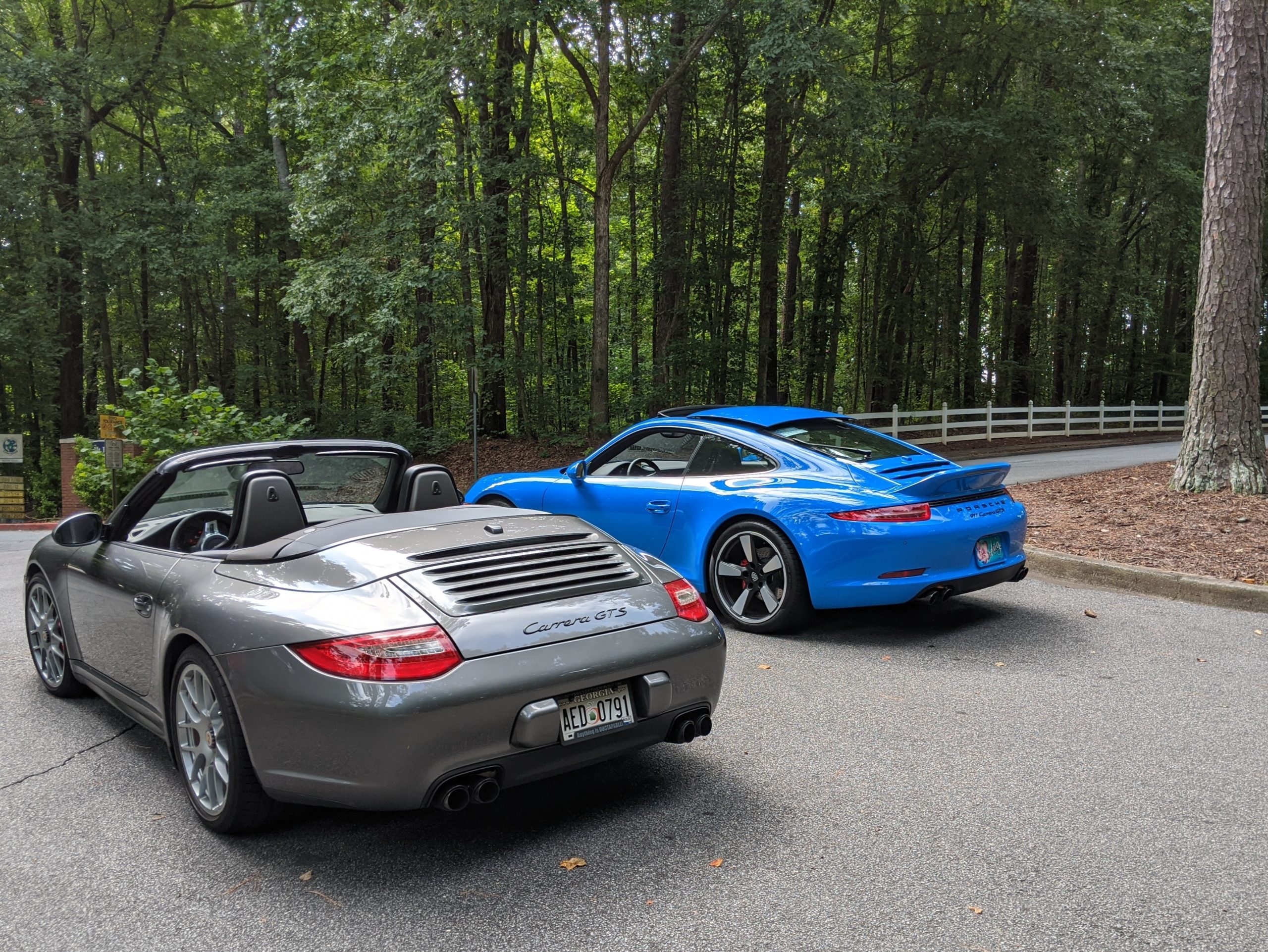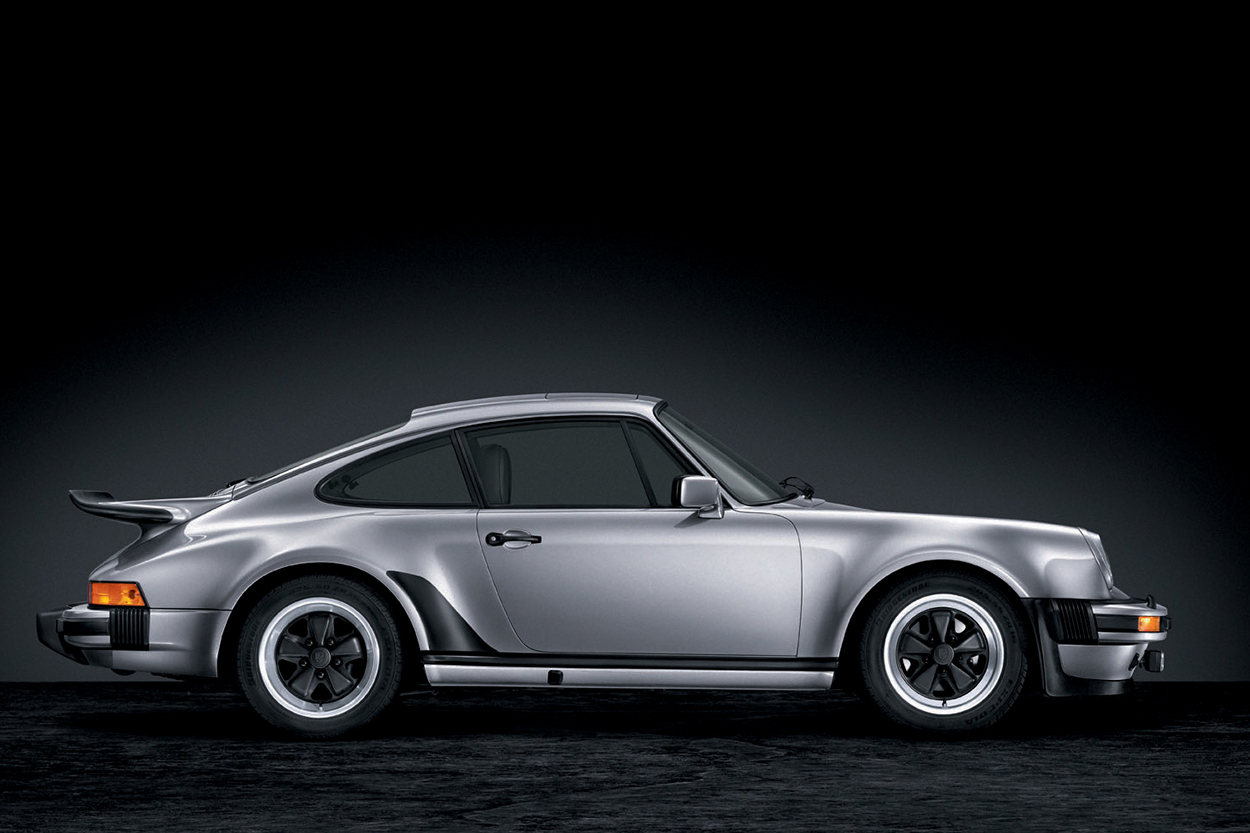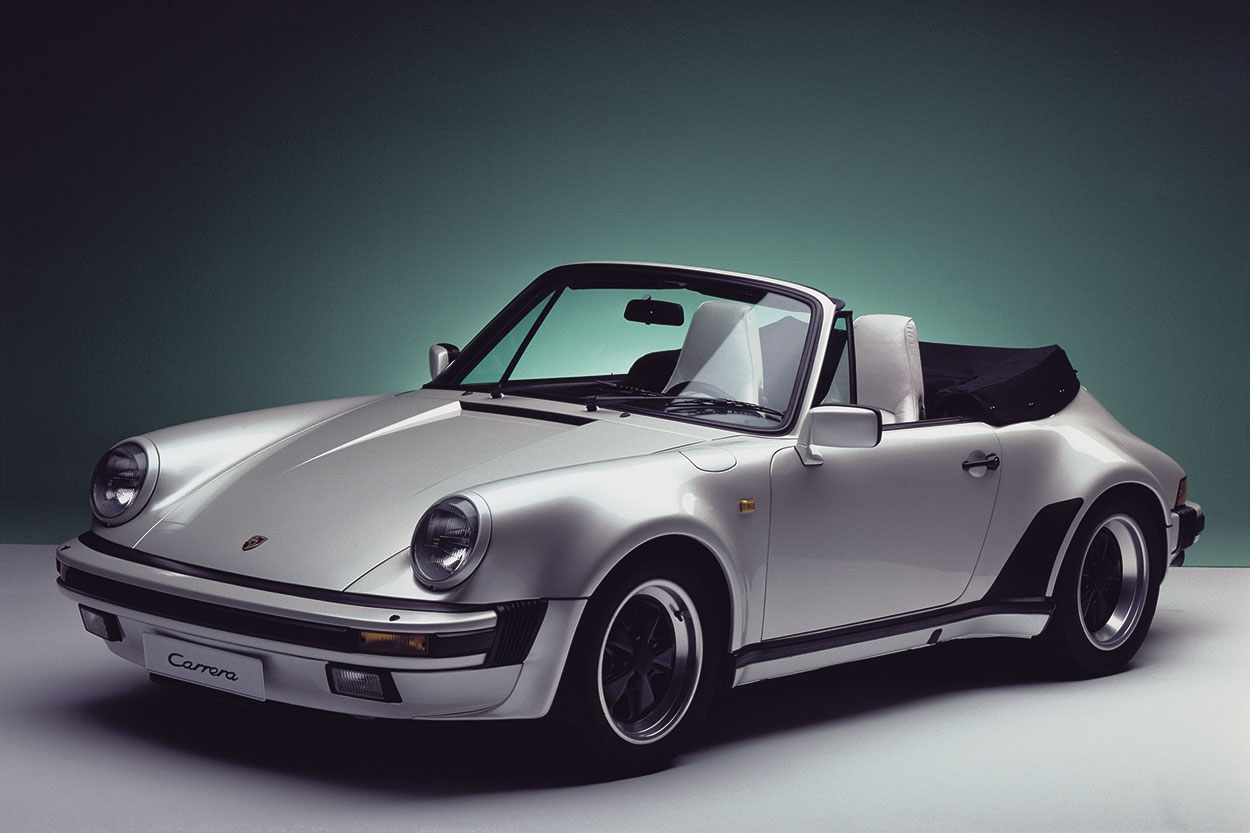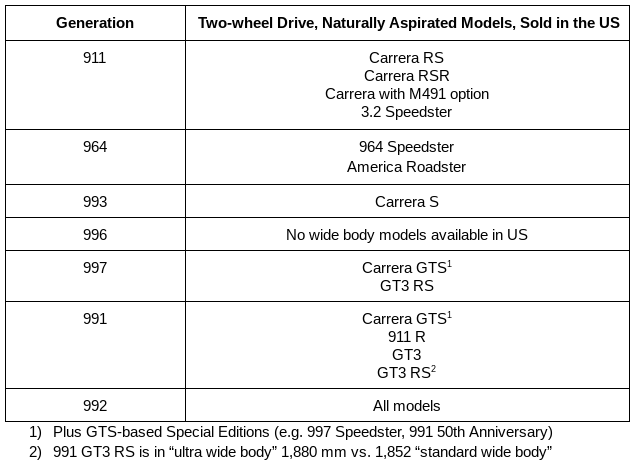
History of the wide body 911 Porsche & why it matters
One of the defining features of the GTS is the wide body design. With both the 997.2 and 991.1 generation cars, the GTS is one of the few possible paths to buying a naturally aspirated, two-wheel drive wide body 911 Porsche.
For both GTS variants, the wide body design adds 22 mm to each side for a more muscular appearance. The change offers more than improved looks though, a wide body stance also offers advantages to the performance minded. Keep reading below for more info on the history of the wide body including which 911 models use this design, then check out our related post for bonus info on the performance advantages of a wide body design.
I was curious to understand how performance is affected by a wide body design, and also wondered when the first wide body 911 Porsche was introduced. The first Porsche that I remember noticing as a kid was the 70’s era 911 RS/RSR; the wide body was a prominent design element for those cars.

In fact, the ‘73 Carrera 2.7 RS is the first 911 to wear the wide body design, followed by the RSR in ‘74. As these were limited production models, many would say a wide body 911 Porsche model really didn’t become mainstream until the introduction of the 911 Turbo in ‘75 in Europe (‘76 in the US), and it has remained a defining feature of the model since.

By the 1980’s enthusiasts began welding arches on to naturally aspirated 911’s to achieve the muscular look of the Turbo. Porsche embraced this interest and began to offer Turbo-look cars that adopted the wide body design in addition to other enhancements. Optioned as the M491 or Turbo-Look package starting in 1984, the cars were initially given a wide body stance by attaching arches to a narrow body car. By 1986 Porsche began producing the M491 cars using a wide body side panel.

Next came a range of special edition two-wheel drive, naturally aspirated cars in wide body including the 3.2 Speedster, 964 Speedster, the America Roadster, and other models available outside the US. Porsche then went with a wide body layout for all 993 Carrera S cars only to revert back to a narrow body design for all 996 two-wheel drive, naturally aspirated cars sold in the US (i.e. the GT3 RS was a notable wide body exception in the 996 range, but was not available in the US market).
The 997 generation offered two wide body options in a two-wheel drive, naturally aspirated format, the GTS (and GTS-based special editions like the Speedster) and GT3 RS. With the 991 the line-up became a bit more complex. The GTS (and GTS-based special editions like the 50th Anniversary 911), 911 R, and GT3 models were built with a 1,852 mm wide body design, while the GT3 RS used a 1,880 mm “ultra wide body” shared with the 911 Turbo. With the introduction of the 992, Porsche announced that all models will be delivered in wide body.

With the history of the wide body as a backdrop, let’s shift the focus to performance. In this area, there are two factors to consider: traction and suspension dynamics. A wide body design allows for a bigger tire while keeping the wheels inboard of the bodywork. The larger tire contact patch results in increased traction which supports more power for performance oriented driving.
A wide body design can also affect suspension dynamics such as body roll and over/under steer. In simple terms, stability is increased as the wheels are pushed outward from the centerline of the car. Read more about how a wide body design affects performance in this post comparing a 997 GTS and Carrera S.
3 thoughts on “The History of Wide Body and Why It Matters”